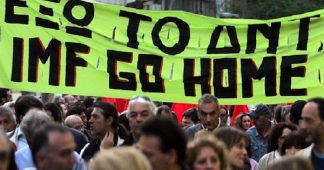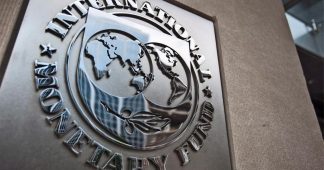Argentinian economist Roberto Frenkel developed a 7-stage model to explain what happens when a weak country like Greece joins a currency union. Stefano Fugazzi reports.
On 23rd June Moody’s upgraded Greece’s long-term rating to Caa2 and changed the economic outlook to positive from stable. Moody’s said that the Greek economy started to show signs of recovery.
“Improved fiscal prospects on the back of 2016 fiscal outperformance, expected to lead soon to a reversal in the country’s public debt ratio trend. The government posted a 2016 primary surplus of over 4% of GDP versus a target of 0.5% of GDP.”
Moody’s expects the public debt ratio to stabilise this year at 179% of GDP, and to decline from 2018 onwards, on the back of continued substantial primary surpluses.
Even though the near term outlook is brighter than it was anticipated only a few months ago, longer-term prospects remain challenging.
“There is uncertainty surrounding the capacity of the Greek government to sustain high primary surpluses over several decades.”
As public debt is expected to skyrocket to 241.4 percent of Greek GDP by 2060, the European Commission expects “significant downside risks to growth linked to aging populations and trends in total factor productivity.”
Greece became the center of Europe’s debt crisis after Wall Street imploded in 2008 although most of the country’s problems date back to the early 2000s.
Greece joined the single currency in January 2002 after failing to meet the EU’s economic criteria in 1999.
Frenkel claims that when a country with a weak economy adopts a strong currency, it would be only a matter of time before short term gains lead to long term pain.
Frenkel originally developed a 7-stage model to explain the 1998–2002 Argentine Great Depression, which culminated with the end of the peso’s fixed exchange rate to the US dollar. However, this model has been since used to describe the current economic situation in Greece and the Eurozone’s periphery.
Stage 1: Introduction of the single currency
The first stage of Frenkel’s model begins with the introduction of a single currency, the euro, which shocked the national financial systems as it established stronger incentives for arbitraging between core and peripheral countries assets and led to the booming phase in the periphery of the Eurozone (Greece included).
Stage 2: Capital Inflows and deregulation
The introduction of the euro, by increasing the incentives to international capital flows, generated renewed risks without a reinforcement in financial regulation. The educated reader may recall that Basel II came into force in 2008 and that the EU regulators are still in the process of harmonising the capital markets; hence Greek banks had fewer constrains in terms of capping lending and imposing more stringent loan-to-value (LTV) limits.
Stage 3: High growth, low employment
At this stage, the combination of a fixed exchange rate, that is the single currency, and capital account liberalisation generated capital inflows which expanded liquidity and credit within the Greek economy, fueling the growth of financial and real asset sectors. As a result of these, output and employment growth accelerated.
Stage 4: Fueling the bubble
In stage four GDP and employment growth determined an increase in inflationary expectations and in the overall size of private and household debt.
Stage 5: External macroeconomic shock
During the fifth stage, an external macroeconomic shock – that is the burst of the subprime bubble in the US – brought the boom of the Greek property and lending markets to an end, causing many private enterprises to be rescued using taxpayers’ money and therefore determining the exponential growth of the public debt-to-GDP ratio.
Stage 6: Austerity drags the economy
At this stage, the Greek government was forced to tighten its budget by promoting (or being asked to promote) austerity policies, which depressed the economy and led to the request of the so-called bailout programmes in 2010, 2012 and 2015.
Stage 7: Exiting the single currency
According to Frenkel, the cycle ends with a country leaving a monetary union.
In Greece’s case, this is an unlikely happy ending.
With the so-called Troika – the International Monetary Fund, the European Central Bank and the European Commission – owning most of Greece’s debt, the Hellenic country’s fate is determined by its creditors, not its people











